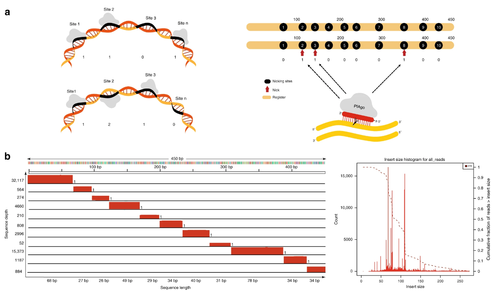DNA Punch Cards for Storing Data
Overview
Synthetic DNA storage systems draw significant interest in the scientific community due to the potential for high storage density and stability. These systems are costly, have a high read/write latency, and are prone to errors. However, these issues can be resolved through the use of native DNA punch cards.[1].
Results
Native DNA can be used as punch cards due to the fixed-nature of native DNA sequences. Information can be encoded by nicking the backbone of double-stranded native DNA, enabling operations such as random access and in-memory computation. This is achieved by parsing files as n-bit strings which are subsequently converted into nicking positions that serve as registers. At each register's position, a nick indicates a value of 1, and the absence of a nick indicates a value of 0. For example, a string of 01001000 would have nicks at positions 2 and 5. Since the bit 0 doesn't require any reactions in this nick-based system, it halves the size of recorded files. The following figure shows the reading and writing of encoded data:
